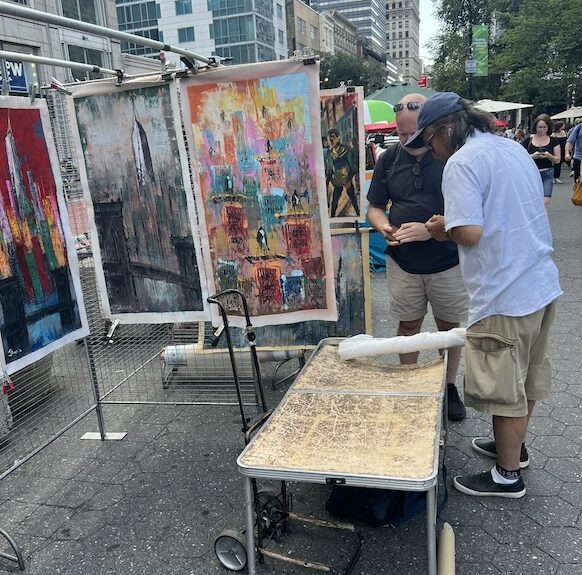Arts & Entertainment Business
Selling art where it’s against the law
By Aisatou Kabba
For years, Marty Allen has been selling his handmade puppets and Bryan Closi has been peddling his photography on some of the busiest spots in Manhattan, including ones where selling their work is illegal.
“I’ve had my stuff confiscated and the police threaten to push me out. And when they do come it doesn’t scare me. I do whatever they want me to do and I’ll be right back out” on a different day, Allen said.
Since 2009, has been selling in Union Square, one of four parks in Manhattan where such sales are against the law.
Artists who, like him, are choosing whether or not to follow the law or not as they try to earn a living off their work.
“The expression isn’t so you could make money. The money is so you can keep expressing yourself,” said Close, who’s been vending his photos in the same park since 2012.
The struggle for artists’ rights in New York has a long history.
Twenty four years ago, artist and activist Robert Lederman led the fight against Mayor Rudy Giuliani, whose administration and New York City Council outlawed the sale of art in public places in New York City, unless the artist had a permit. Lederman was arrested over 41 times for protesting that rule.
Those and other people’s protests succeeded; selling art became legal everywhere except Union Square, Battery Park, High Line and certain portions of Central Park.
However, Lederman is disappointed that some artists still choose to sell in illegal areas. “A lot of artists don’t appreciate the extent of the freedom they have. They only focus on the problem. ‘A cop came by yesterday … Another vendor took my spot.’ They’re not realizing that in the whole world some artists never get to showcase their work.”
Lederman said artists can showcase their work in neighborhoods that are art deserts, including parts of the Bronx.
“Other than graffiti,” he said, “chances are you aren’t going to see any art. If you’re an artist and you make art that’s going to appeal to that demographic, that would be a really good place to do it. It would also make the artist feel really good to know they’re bringing culture to a community that lacks one when it comes to art.”
Close holds a different view. About seven years ago, Close began selling art on a street corner in a legal location. “I’ve tried selling on Bedford Street” in the West Village, he said, “And, boom! It was gentrified and the people there weren’t interested. So, I came back here.”
Lederman dismisses such reasoning as mere excuses.
“They make a couple of sales and then they decide, ‘From now on I have to go to Union Square Park.’ No, you don’t,” Lederman said. “There’s many other places that you could sell but most artists limit themselves to one spot.”
He believes that these artists should appreciate the progress made and consider exploring legal vending opportunities instead of risking fines and arrests.
“I’ve always encouraged artists not just to go to these very popular places, because the other aspect of it is that the more artists that are in a spot the more complaints there are gonna be. The more complaints there are gonna be the more likely it is that there’s gonna be enforcement.”


